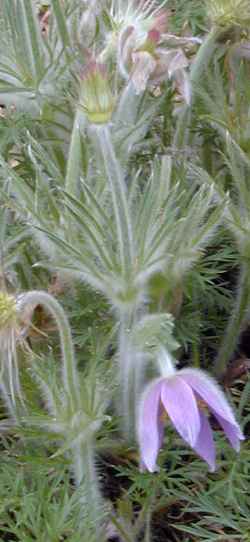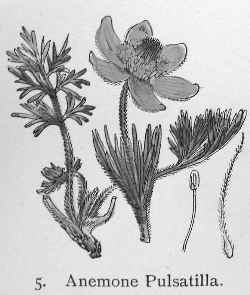European Pasque Flower
Scientific Name: Anemone pulsatilla L.
Synonym: Pulsatilla vulgaris
Family: Ranunculaceae
Sunset®: 1-6,10,15-17
USDA: 4-8
Sun Exposure: Sun to light shade
Origin: Central and northern Europe
Growth Habits: Perennial rosette of finely divided stalked leaves, 4 to 10 inches tall (10-25 cm), up to 12 inches spread (30 cm), out of a thick and woody rootstock; young leaves covered with silky hairs
Flowers: White, pink, red, purple, violet, blue or light blue flowers
Watering Needs: Keep the soil moist, dislikes hot dry climates
Propagation: Seeds, or division in spring

Although the plant is poisonous, it is used medicinally.
Blooming Habits:
Purple or blue, to reddish, bell-shaped flowers, up to 2.5 inches in diameter (6 cm), in the spring (around Easter, hence the name 'Pasque Flower'). The purplish sepals are silky hairy outside. The seeds have long and feathery extensions like a Clematis.
Desert-Tropicals is dedicated to provide gardening advice, gardening ideas, and information about flower of all kind for landscape and collections.We try to check carefully the identification of the plants on the illustrations as well as the other information from the page, but occasionally errors do occur. if you notice anything that needs to be changed please contact us.Thanks.
© 1998-2020 Philippe Faucon, All Rights Reserved.
